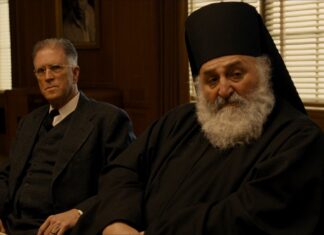By Daphne Abeel
Special to the Mirror-Spectator
WATERTOWN, Mass. — Anyone with a passing knowledge of 20th century photography has seen an image shot by Yousuf Karsh. His photograph ofWinston Churchill is possibly the most frequently reproduced photo portrait in the world.
Thus, it is no wonder that the Armenian Library and Museum of America (ALMA) has celebrated, with two events, its acquisition from Karsh’s widow, Estrellita, of a group of images that will become part of the museum’s permanent collection. It was Bob Khederian, a board member of ALMA, who first made the suggestion that she donate prints to ALMA.
A gala benefit took place on Friday night at the Copley Plaza Hotel and the exhibit, titled “Karsh: Celebrating Humanity,” opened to ALMA members and supporters on Saturday. Certainly, Karsh’s images have drawn attention because he gained access to some of the world’s most famous people. But he would not have achieved international renown without a superb technical mastery of his craft and a deeply-thought-out vision of how he wished to present his subjects. He wrote extensively about his approach to the making of photographic portraits — for example, in his book, Karsh Portfolio, 1967, he stated, “Within every man and woman, a secret is hidden, and as a photographer, it is my task to reveal it.”
What may be less familiar to viewers than the iconic portraits themselves are some of the particulars of Karsh’s photographic and printing techniques. For Karsh, taking a portrait was not a matter of sitting someone down in front of a camera and simply clicking the shutter. Extensive preparation and meticulous attention to every detail were key to producing the final product.
Karsh began his study of photography at an early age. Born in Mardin, Turkey in 1908, he was sent by his family, at the age of 16, to Sherbrooke, Quebec, Canada where he apprenticed with his photographer uncle, George Nakash. Nakash felt his nephew had great potential as a photographer and arranged for him to study in Boston with a fellow Armenian portrait photographer, Joseph Garo. When he returned to Canada, he set up his own studio in Ottawa in 1932, not far from the seat of Canada’s government and through a connection with the prime minister, he began to take portraits of prominent figures.







